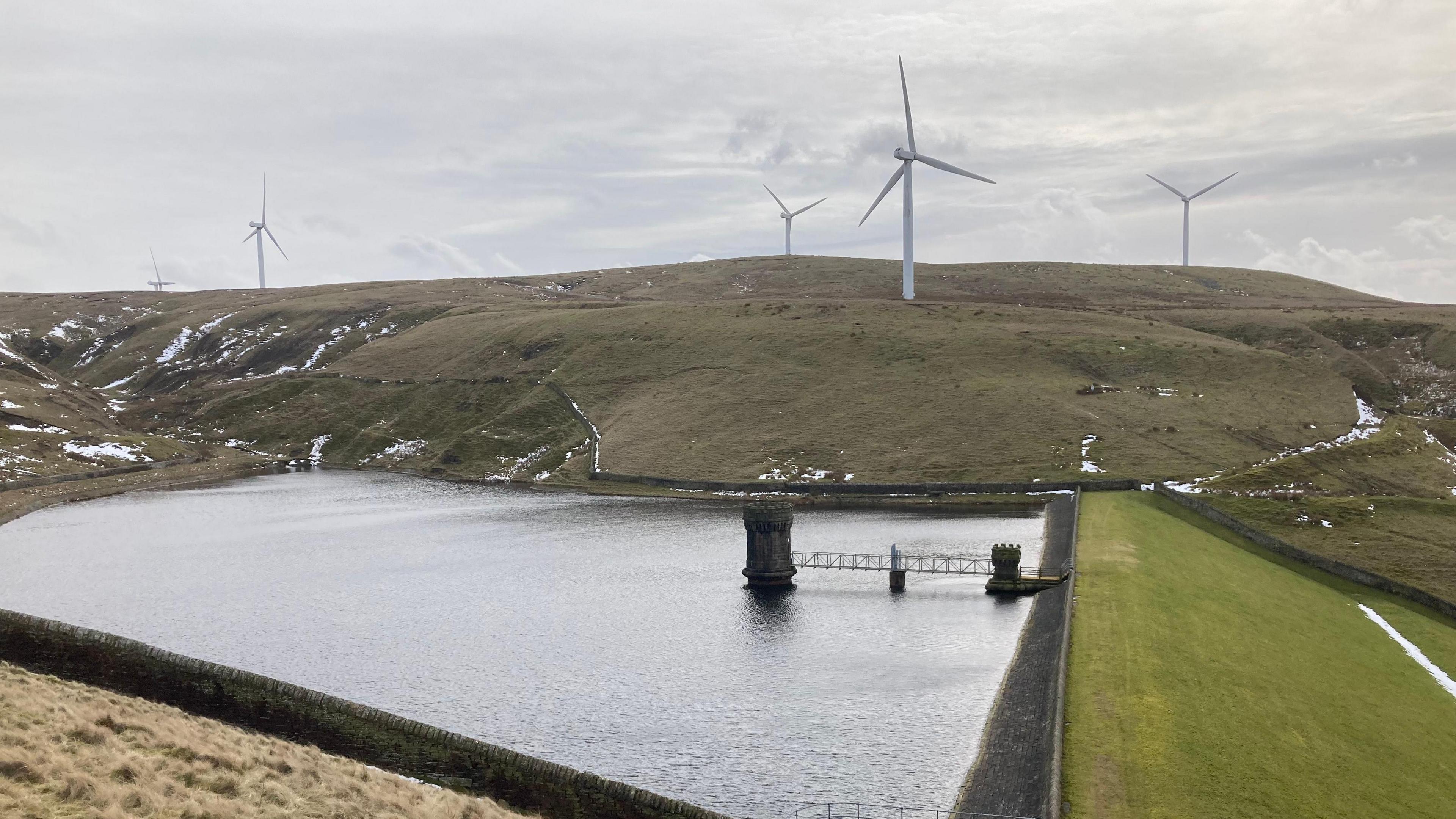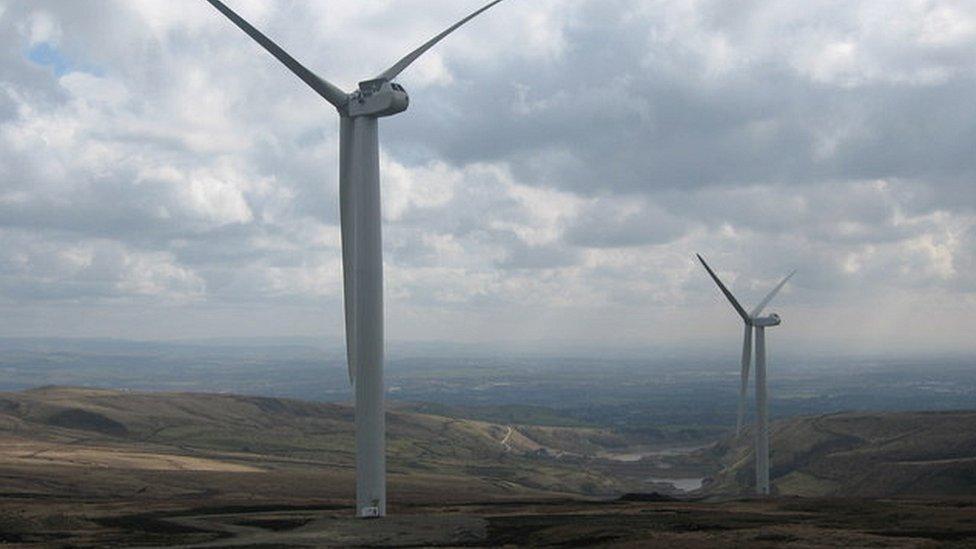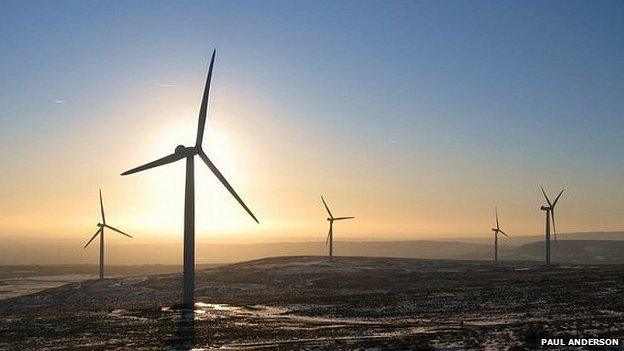Why a wind farm saga is entering its third decade

The plan could see Scout Moor expanded to created England's biggest wind farm
- Published
Close to two decades ago, residents of the towns and villages near moorland straddling Greater Manchester and Lancashire were in uproar over plans to build a huge wind farm.
Twenty-six turbines were erected over a rural area between Rochdale and Rossendale in 2008 as part of the Scout Moor Wind Farm.
Campaigners in Rochdale, Edenfield and Rawtenstall blocked plans in 2011 to add more but now face a proposal by Cubico to expand the site to create England's largest onshore wind farm.
Rochdale councillor James Gartside said there had been "strong opposition" to expansion in the past but the energy firm said the project would benefit the local community.
Largest onshore windfarm could be built on moorland
- Published5 November 2024
The latest proposal - dubbed Scout Moor II - would see 21 taller turbines built.
Each would be erected in an area to the east of the current installation and collectively could generate up to 100 MW, powering up to 100,000 homes, the company said.

Scout Moor wind farm was built in 2008
For the people of Norden, who live directly south of the current wind farm, the prospect of a new planning battle is a reminder of previous campaigns.
Mr Gartside has represented the village on the periphery of the moors since the 1980s, and he said he was not sure what the community response would be this time.
He was among those who opposed the original Scout Moor plans by north-west property giant Peel, alongside environmental campaigner David Bellamy.
They feared for the environmental impact on peatlands in the area, a popular beauty spot.
Despite their best efforts, permission was granted in 2005 and construction started in 2007.
However, when later plans by Peel and United Utilities were submitted to double the wind farm’s size in 2011, campaigners were successful in getting them stopped.
"The opposition was still just as strong the second time around," Mr Gartside said.
"We managed to get that one stopped though."

Most of the new wind turbines would be built on the eastern side of the moorlands.
There were later plans to increase the number of turbines at Scout Moor but neither progressed before a de facto ban on onshore wind farms was introduced by the former Conservative government nine years ago.
That has since been eased, meaning Scout Moor II could become the first major development of its kind in England since the original plans were shelved.
A Cubico spokesman said the proposed new wind farm would be operated separately from the current Scout Moor site.
The firm estimated it could be operational before 2030 if planning permission was granted, and claimed it could lead to an estimated £200m in investment and hundreds of jobs.

Cubico has proposed a long-term scheme to restore moorland as part of the plan
Before any planning permission is considered, there will be consultation with residents, according to the Local Democracy Reporting Service.
This will focus on the size and scale of the 21 new turbines, set to be built on the eastern side of the moorlands.
The councillors who represent Norden said they were collectively pleased by the proactive approach Cubico was taking to speak to residents.
"I would rather not have them," Mr Gartside said but added that, if they had to be built, the community should benefit.
The firm has proposed a £20m community wealth fund for schemes to help with the cost of living, improving green spaces and business support.
It has invited the public to share ideas on how the cash could be spent.
The firm's head of northern Europe, James Pinney, said it wanted to shape the project with local communities to leave a "positive, economic and environmental benefits for all".
The plans are set to be submitted after a full public consultation in 2025.
Related topics
- Published5 November 2024

- Published11 October 2016

- Published22 September 2015
